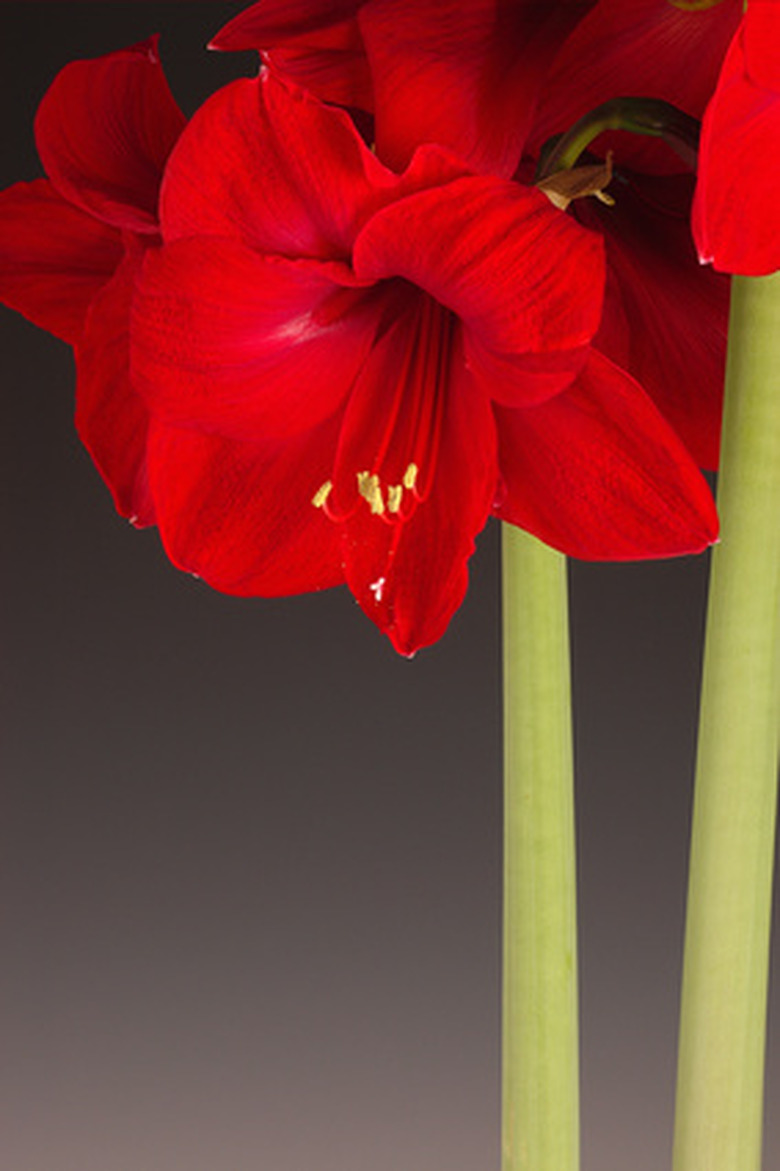Anatomy Of An Amaryllis
The amaryllis plant is a member of the belladonna family. This impressive flowering plant is a favorite for the Easter and Christmas holiday seasons. The plant is easily grown from a large bulb. Children and adults find that growing the plant is a fascinating endeavor. The anatomy of an amaryllis plant allows it to be fertilized and propagated to produce seeds for new plants.
Planting the Amaryllis
The amaryllis plant starts as a large bulb that is three to 11 centimeters long. The bulb should be planted in a lightweight soil in a clay or plastic pot. The plant leaves or a bud-tipped stem will emerge from the soil after the bulb starts to grow. A healthy root system will grow down into the soil, establishing a foundation for a top-heavy plant.
- The amaryllis plant is a member of the belladonna family.
- The plant leaves or a bud-tipped stem will emerge from the soil after the bulb starts to grow.
Amaryllis Growth
The stems or stalks of the amaryllis plant can grow to an average height of 20 inches. A healthy plant will produce one to two leafless stems. The bud is generally a plump triangular shape at the top of the stalk or stem. The leaves are thin, narrow green strips up to 20 inches long.
Flowers
An amaryllis stalk will produce two to five large flowers. The colorful flowers have six tepals: three sepals and three inner petals. Amaryllis blossoms can be up to six inches wide. They have a female reproductive system with a stigma, or pollen receptor, that leads to the ovum or ovary of the flower. Their male reproductive system has several stamens that produce pollen to fertilize the stigma.
- The stems or stalks of the amaryllis plant can grow to an average height of 20 inches.
- A healthy plant will produce one to two leafless stems.
Propagation
Knowledge of the anatomy of the amaryllis flower is important for pollinating the plant to produce seeds. It is best to cross-pollinate the flowers from two separate plants. This will promote the growth of larger bulbs. Remove a stamen and rub the pollen onto the single stigma of a flower. The pollen can be distributed with your clean fingers or a soft-bristled paintbrush. Once the stigma has been pollinated the ovum will become swollen and turn a tan or light brown color. This seed pod has ripened and will crack open when the seeds are ready for harvest.
- Knowledge of the anatomy of the amaryllis flower is important for pollinating the plant to produce seeds.
- It is best to cross-pollinate the flowers from two separate plants.
Considerations
The amaryllis is a multi-flowering plant that can be propagated. It is grown in a variety of solid colors from apple-blossom pink to deep red. Variegated blossoms are equally impressive. The perennial can be coaxed to flower again after a resting period. If you are aware of the anatomy of the plant you will be able to harvest seeds to grow more impressive plants in your home or garden.
